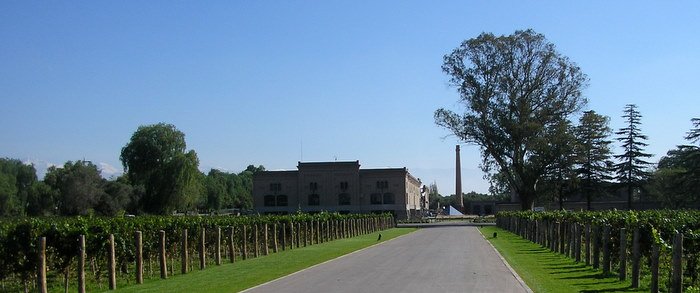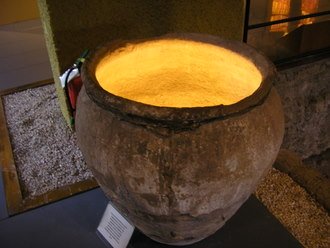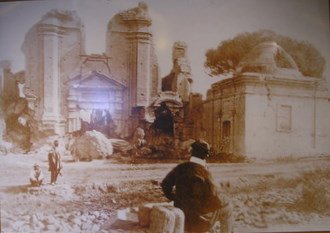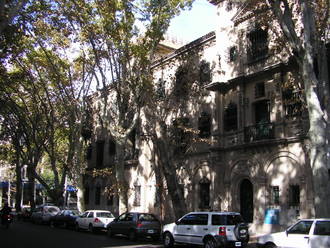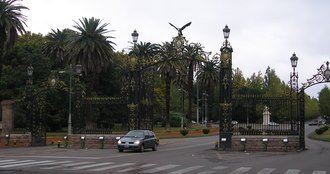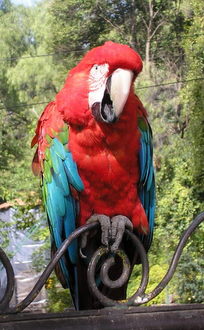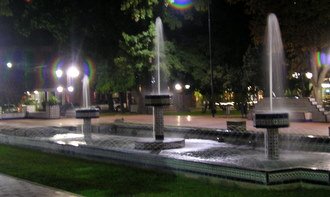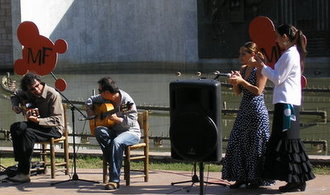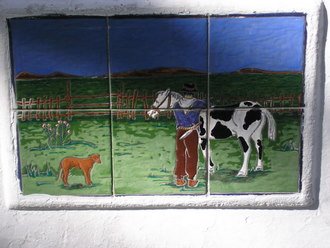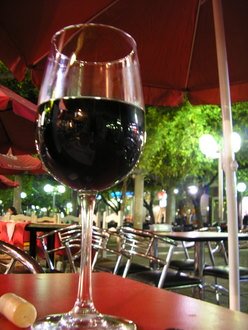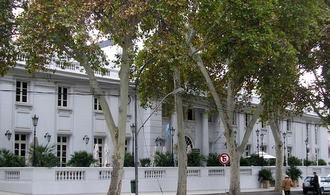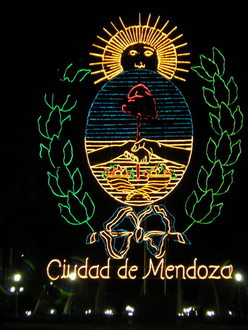|
MendozaThe land of the grape and olive32°53'S. Lat. 68°49'W. Long Pop: 110,100 elevation: 2,388’
(La bodega Trapiche)
For North American wine enthusiasts, Mendoza Province is the Sonoma Valley of Argentina. The Province’s 1,400 vineyards are the economic powerhouse for the city of the same name. At first impression, Mendoza is an uninteresting city with a metropolitan area population of one million. It seems hectic with an urban sprawl of nondescript buildings yet vibrant. What’s surprising is how it got that look. The First People of the region, the Huarpe, brought agricultural life to the parched lowlands by digging irrigation canals channeling Andean glacier fed rivers to create fertile farm plots. In the early 1500’s the region, and settlement, came under the domination of the Incas becoming the southern most frontier of their vast empire. The Incas improved the irrigation system and created a road network through the Andes. The Spanish arrived in 1561 and built Mendoza into an important trade link between the Viceroyalty of Peru’s silver mines in the Bolivian altiplano and the Pacific ports of the General Capaitaincy of Chile. The Spanish missions quickly recognized that the geography, and over 300 sunny days a year, was ideal for wine grapes. By the early 1700’s vineyards had become an important mission industry, but it took the devastating 1865 Earthquake to make wine an economic engine. 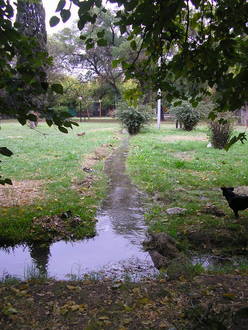
(destruction of the Cathedral, 1865 Earthquake)
Mendoza and San Juan Provinces lie on one of the earth’s most dangerous tectonic plates. The 1865 quake (estimated to be 7.8 on the Richter scale) smashed every building in the city killing a third of its population. (The Museo de Art Fundacional, Calle Alberdi and Videla Castlllo, documents the vast destruction). Immigrants from Italy, France and England were already pouring into Buenos Aires. Many were recruited to rebuild the city, and a railroad link with the Atlantic, over the next few decades. City designers used French urban planning with wide, tree-lined streets radiating from a large central Plaza Independencia to four smaller plazas (Chile, San Martin, Italy and Espana) that anchor and define the core. About 15% of metropolitan Mendoza lives within these bounds in French-inspired mansions, high-rise apartments and Argentina’s ubiquitous architectural fusion of Spanish, English Tudor, international modern and Alpine Chalet.
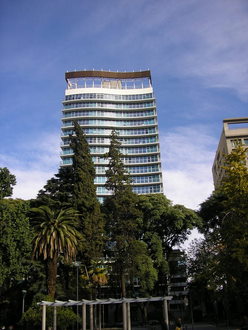
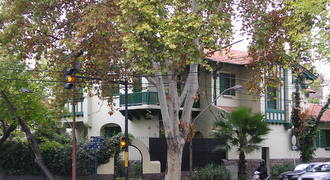
One side of Plaza Independencia borders the vast and beautiful Charles Thays designed Parque General San Martin. The Cerro de la Gloria, a 1,500 foot hill within the park, is crowned by a monumental homage to General San Martin. Mendoza was the General's headquarters as he prepared for war against the Spanish in the Andes during the successful War for Independence. Bus #11 from Plaza Independencia goes round trip to the Cerro.
(gates to Parque de San Martin)
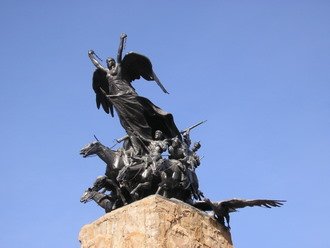
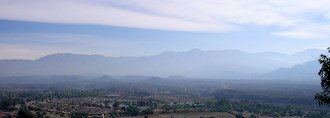
The surrounding barrios of this inner core developed as immigration and economics dictated without a lot of urban planning. This amalgamation of neighborhoods creates a confusing system of name changes for streets. Names not only change depending on which direction they radiate from Plaza Independencia, but then again as they pass through the city’s barrios. A good map, preplanning your route and being aware of name changes are necessary to lessen frustration - unless you always take a taxi.
The five Plazas are especially pleasant at night with fountains and artistic lighting. Plaza Espana, on Avenida Espana between Calle Montevideo and San Lorenzo, makes extensive use of fine Spanish art tile. An antique market is held every Thursday. Plaza Independencia, at the center, has frequent crafts markets. It is also the location for the small but fine Museo de Art Moderno and the Teatro Municipal. The city frequently sponsors performing arts activities in front of the massive fountain.
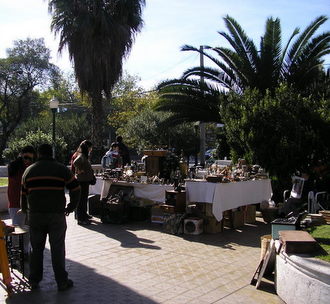
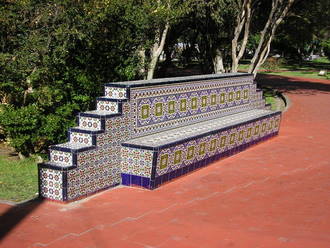
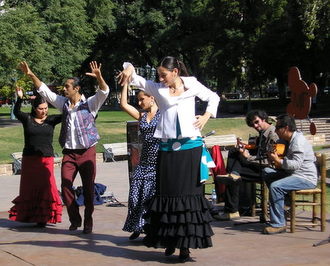
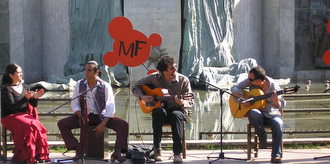
A wide pedestrian mall flows from the Plaza with shops and cafes. Many of the cafes have similar menus and prices, as well as staff whose job it is to entice you to dine at their venue. I chose to use a chef’s intuition by seeing which one had both a sizable and diverse clientele. I was not disappointed with my choice of
Restaurant Ala Marosca.
Nor was I disappointed sitting at the sidewalk tables on a balmy Autumn afternoon at Restaurant La Tienda, Aristides 341, within view of the vast Parque de San Martin. For different reasons, I did enjoy Capri, Ave. San Lorenzo and San Juan, as well as Parilla Eros, Ave. Guemas.
There are many accommodation options in this very busy commercial city. You can choose the palatial Park Hyatt at palatial rates, or a Bodega outside the city, such as Cavas Wine Lodge, at similar rates and in the center of a working vineyard. There are many B & B’s and small hotels nicwly clustered around the Plazas or choose one of the citiy's hostels and have terrific conversations with people world wide. I chose the humble Hostel Casa del Pueblo, Ave. Pellegrini 377, Guaymallen (www.casapueblohostel@yahoo.com.ar) near the bus Terminal, in Mendoza's oldest barrio outside the core. I spent eight pleasant nights in a private room off the couryard, with a bath shared by one other room, for AR$60 (US$16.50) per night - or you can stay in a shared bunk-bed room for AR$30 (US$8.25) per night. Since wine is the reason for visiting Mendoza, a day in nearby
Maipu
is highly recommended.
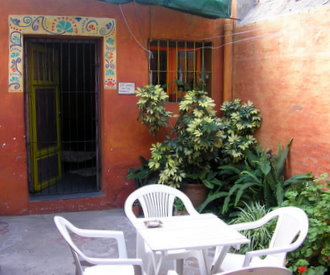
(Left:Park Hyatt/double US$$185) (Right: Hostel Casa del Pueblo/double US$16.50)
You can locate Mendoza by viewing a map of Mendoza Province at:
maps of Argentine provinces
|
